Abstract
Peritoneal macrophages from guinea-pigs sensitized to produce experimental allergic encephalomyelitis show reduced electrophoretic migration speed in the presence of the encephalitogenic factor. This reduction is abolished by prior treatment of the cells with antilymphocytic serum but the serum is not effective if exhibited after the antigen. The results offer support for the `blindfolding' theory of antilymphocytic serum action.
Full text
PDF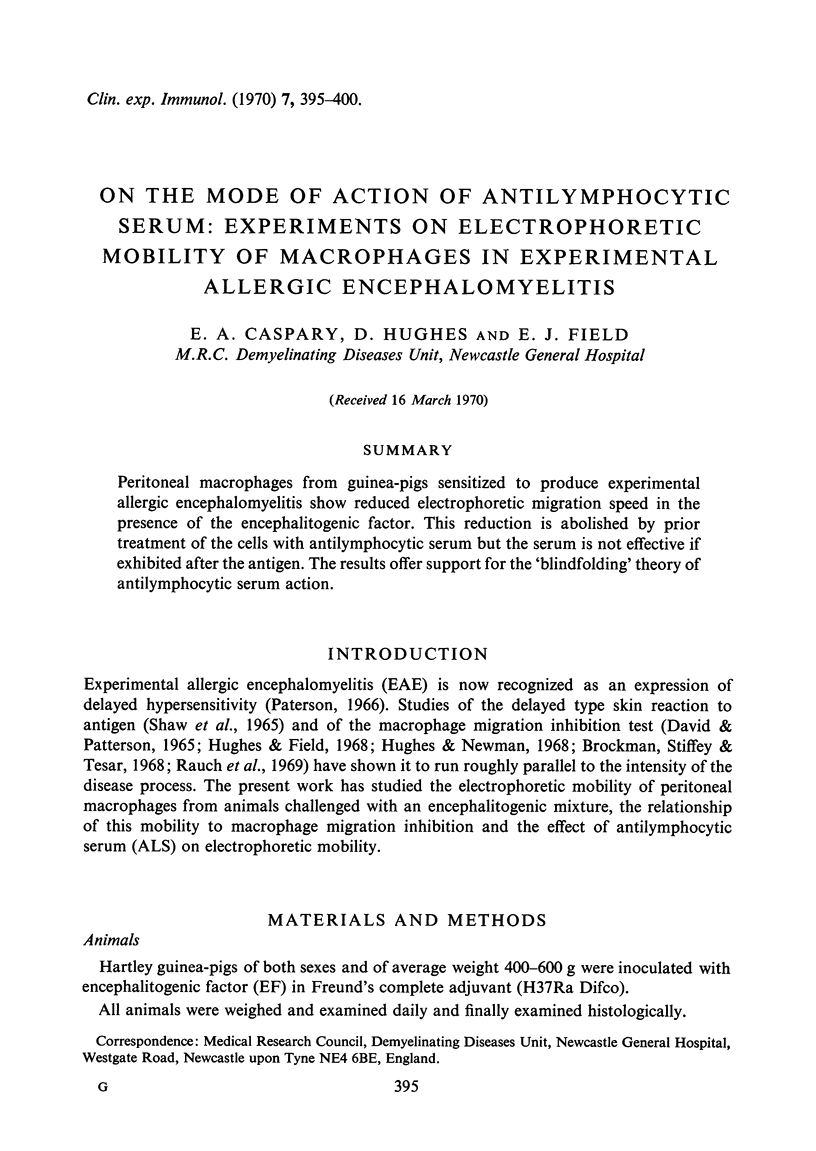
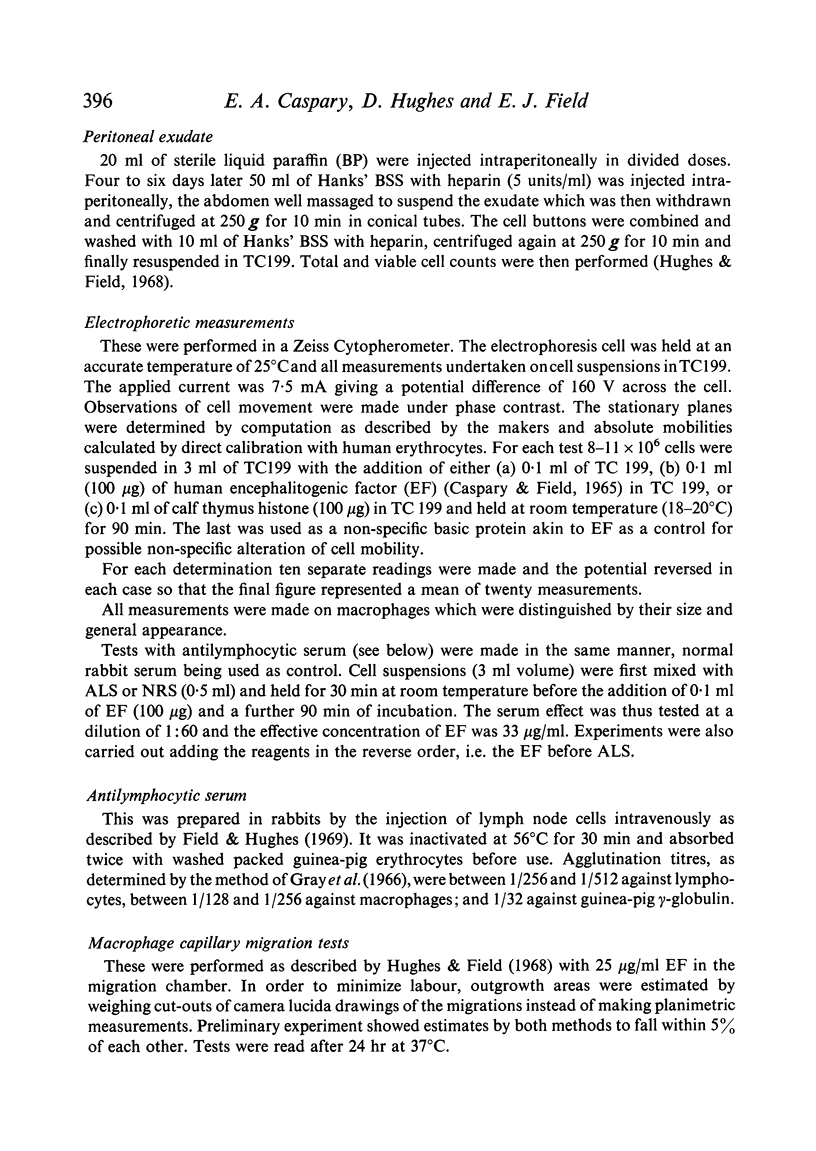
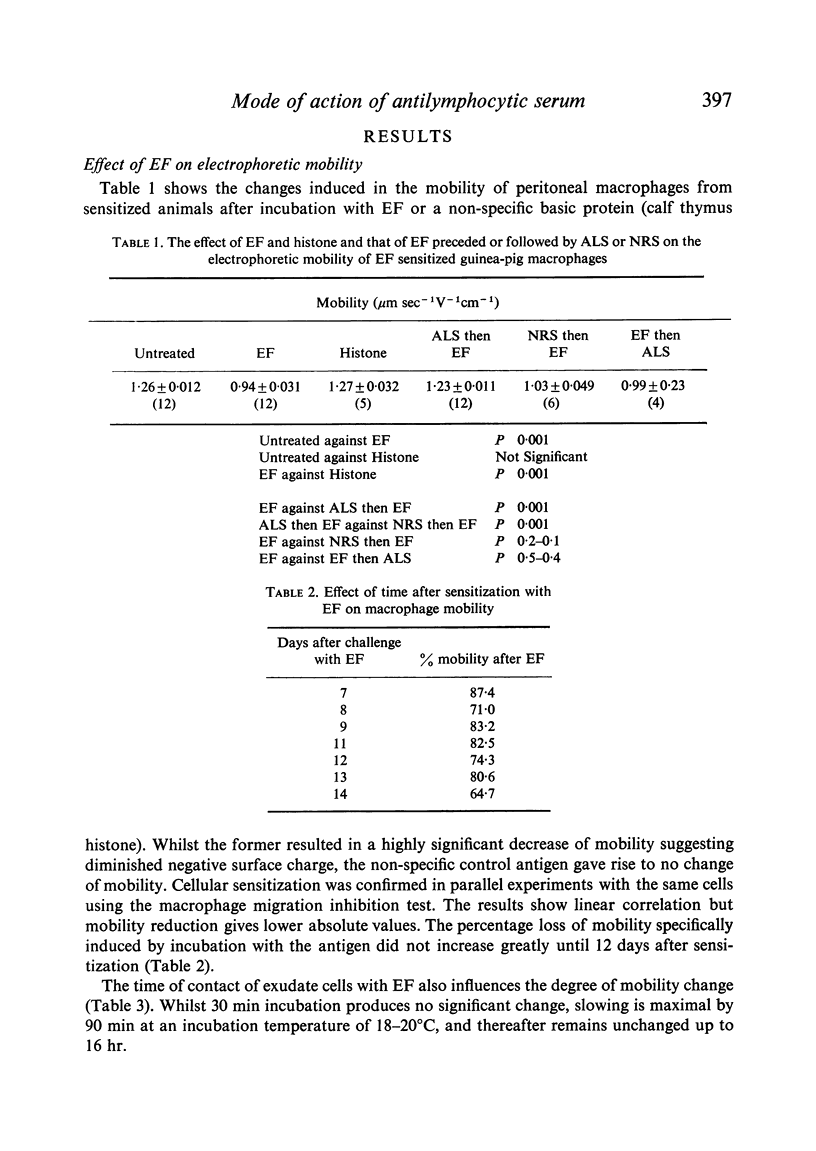
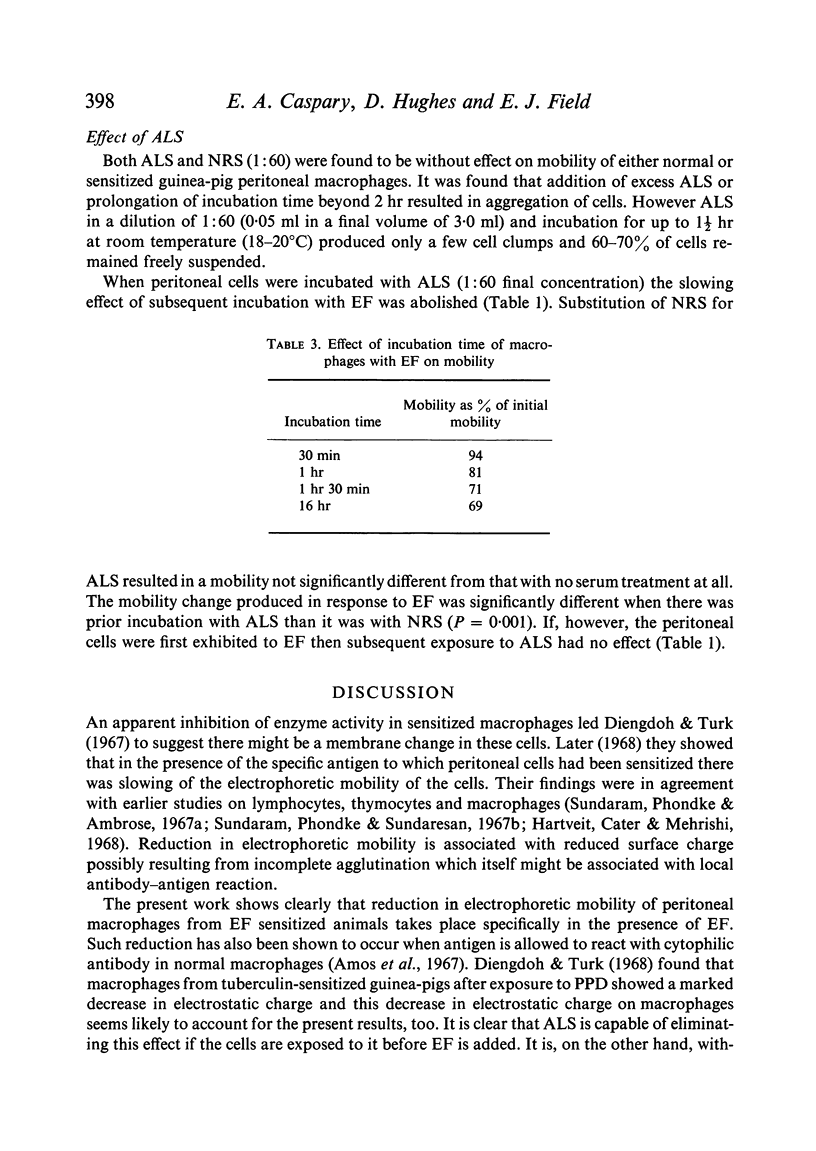
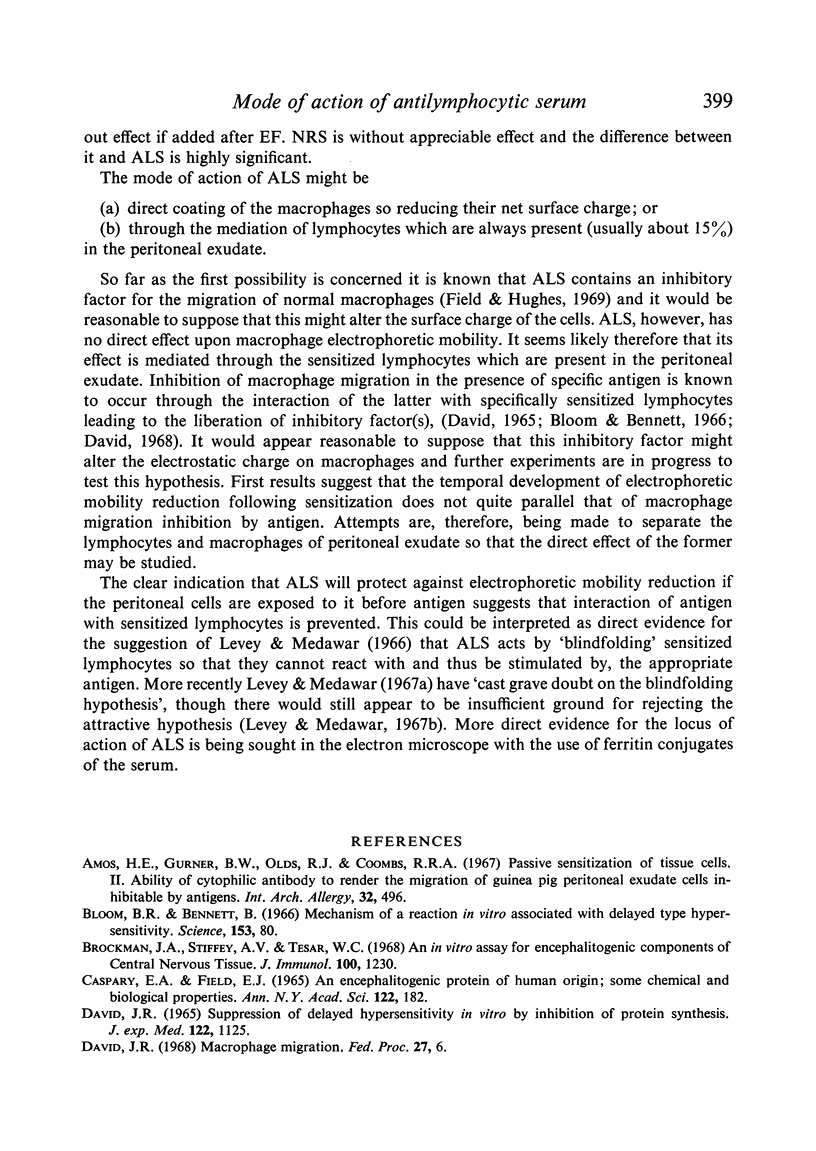
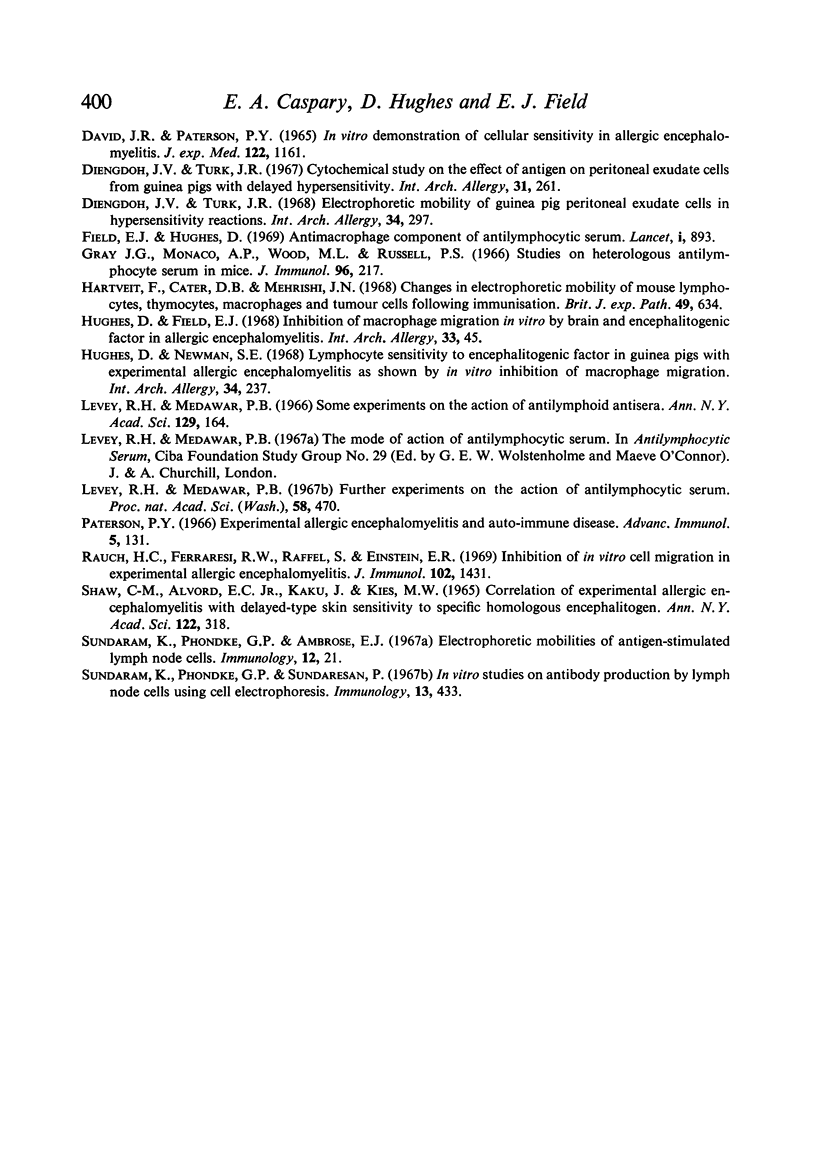
Selected References
These references are in PubMed. This may not be the complete list of references from this article.
- Amos H. E., Gurner B. W., Olds R. J., Coombs R. R. Passive sensitization of tissue cells. II. Ability of cytophilic antibody to render the migration of guinea pig peritoneal exudate cells inhibitable by antigen. Int Arch Allergy Appl Immunol. 1967;32(5):496–505. [PubMed] [Google Scholar]
- Bloom B. R., Bennett B. Mechanism of a reaction in vitro associated with delayed-type hypersensitivity. Science. 1966 Jul 1;153(3731):80–82. doi: 10.1126/science.153.3731.80. [DOI] [PubMed] [Google Scholar]
- Brockman J. A., Stiffey A. V., Tesar W. C. An in vitro assay for encephalitogenic components of central nervous tissue. J Immunol. 1968 Jun;100(6):1230–1236. [PubMed] [Google Scholar]
- CASPARY E. A., FIELD E. J. AN ENCEPHALITOGENIC PROTEIN OF HUMAN ORIGIN: SOME CHEMICAL AND BIOLOGICAL PROPERTIES. Ann N Y Acad Sci. 1965 Mar 31;122:182–198. doi: 10.1111/j.1749-6632.1965.tb20202.x. [DOI] [PubMed] [Google Scholar]
- David J. R. Macrophage migration. Fed Proc. 1968 Jan-Feb;27(1):6–12. [PubMed] [Google Scholar]
- David J. R., Paterson P. Y. In vitro demonstration of cellular sensitivity in allergic encephalomyelitis. J Exp Med. 1965 Dec 1;122(6):1161–1171. doi: 10.1084/jem.122.6.1161. [DOI] [PMC free article] [PubMed] [Google Scholar]
- David J. R. Suppression of delayed hypersensitivity in vitro by inhibition of protein synthesis. J Exp Med. 1965 Dec 1;122(6):1125–1134. doi: 10.1084/jem.122.6.1125. [DOI] [PMC free article] [PubMed] [Google Scholar]
- Diengdoh J. V., Turk J. L. Cytochemical studies on the effect of antigen on peritoneal exudate cells from guinea pigs with delayed hypersensitivity. Int Arch Allergy Appl Immunol. 1967;31(3):261–273. doi: 10.1159/000229874. [DOI] [PubMed] [Google Scholar]
- Diengdoh J. V., Turk J. L. Electrophoretic mobility of guinea pig peritoneal exudate cells in hypersensitivity reactions. Int Arch Allergy Appl Immunol. 1968;34(3):297–302. doi: 10.1159/000230121. [DOI] [PubMed] [Google Scholar]
- Field E. J., Hughes D. Anti-macrophage component of antilymphocytic serum. Lancet. 1969 Apr 26;1(7600):893–894. doi: 10.1016/s0140-6736(69)91945-x. [DOI] [PubMed] [Google Scholar]
- Gray J. G., Monaco A. P., Wood M. L., Russell P. S. Studies on heterologous anti-lymphocyte serum in mice. I. In vitro and in vivo properties. J Immunol. 1966 Feb;96(2):217–228. [PubMed] [Google Scholar]
- Hartveit F., Cater D. B., Mehrishi J. N. Changes in the electrophoretic mobility of mouse lymphocytes, thymocytes, macrophages and tumour cells following immunisation. Br J Exp Pathol. 1968 Dec;49(6):634–647. [PMC free article] [PubMed] [Google Scholar]
- Hughes D., Field E. J. Inhibition of macrophage migration in vitro by brain and encephalitogenic factor in allergic encephalomyelitis. Int Arch Allergy Appl Immunol. 1968;33(1):45–58. doi: 10.1159/000229972. [DOI] [PubMed] [Google Scholar]
- Hughes D., Newman S. E. Lymphocyte sensitivity to encephalitogenic factor in guinea pigs with experimental allergic encephalomyelitis as shown by in vitro inhibition of macrophage migration. Int Arch Allergy Appl Immunol. 1968;34(3):237–256. doi: 10.1159/000230116. [DOI] [PubMed] [Google Scholar]
- Levey R. H., Medawar P. B. Further experiments on the action of antilymphocytic antiserum. Proc Natl Acad Sci U S A. 1967 Aug;58(2):470–477. doi: 10.1073/pnas.58.2.470. [DOI] [PMC free article] [PubMed] [Google Scholar]
- Rauch H. C., Ferraresi R. W., Raffel S., Einstein E. R. Inhibition of in vitro cell migration in experimental allergic encephalomyelitis. J Immunol. 1969 Jun;102(6):1431–1436. [PubMed] [Google Scholar]
- SHAW C. M., ALVORD E. C., Jr, KAKU J., KIES M. W. CORRELATION OF EXPERIMENTAL ALLERGIC ENCEPHALOMYELITIS WITH DELAYED-TYPE SKIN SENSITIVITY TO SPECIFIC HOMOLOGOUS ENCEPHALITOGEN. Ann N Y Acad Sci. 1965 Mar 31;122:318–331. doi: 10.1111/j.1749-6632.1965.tb20216.x. [DOI] [PubMed] [Google Scholar]
- Sundaram K., Phondke G. P., Ambrose E. J. Electrophoretic mobilities of antigen-stimulated lymph node cells. Immunology. 1967 Jan;12(1):21–26. [PMC free article] [PubMed] [Google Scholar]
- Sundaram K., Phondke G. P., Sundaresan P. In vitro studies on antibody production by lymph node cells using cell electrophoresis. Immunology. 1967 Oct;13(4):433–439. [PMC free article] [PubMed] [Google Scholar]


